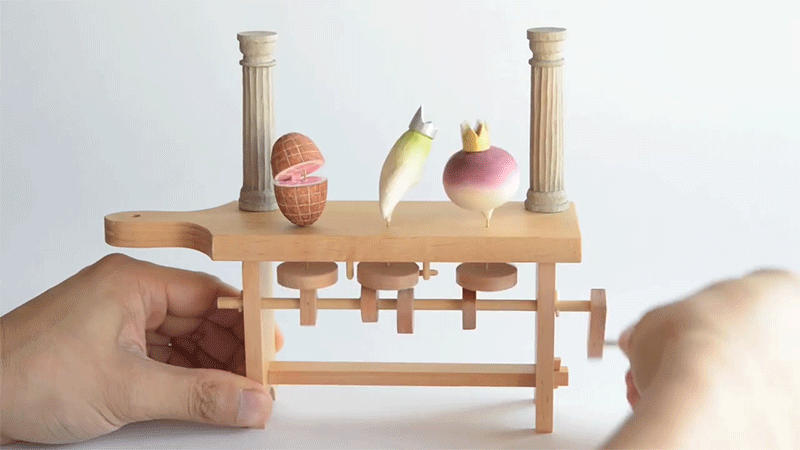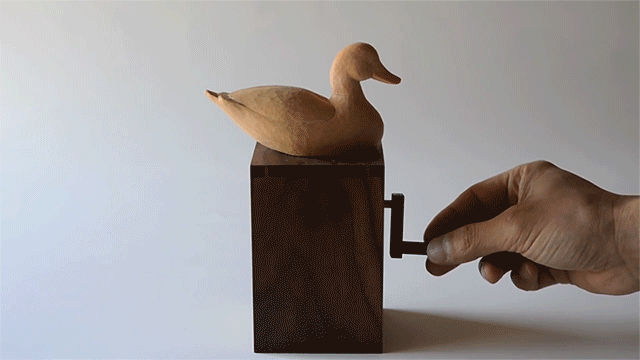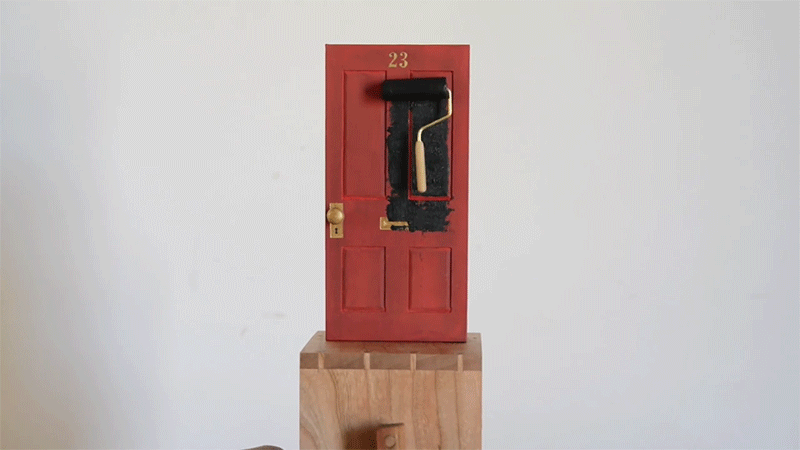With the push of a button or the crank of a handle, these whimsical wooden automata by Japanese woodworker Kazuaki Harada spring to life, with figures that bounce and dance across a miniature stage like puppets.
Harada is a prolific designer of mechanical designs fashioned from wood both large and small, from tiny single-crank pieces to giant labyrinthine playscapes in galleries and museums. The delight in many of his automata is derived from their simplicity, but lately he’s explored increasingly elaborate devices like a dot matrix printer and longer sequences akin to a Rube Goldberg machine.
Harada began making automata in 2002. For a year he studied under Matt Smith, an England-based artist and master automata-maker. Currently based in Yamaguchi, Japan he sells some of his creations in his shop and also maintains an instagram account where he posts various automata that he’s collected (sadly, without animation).
When he first started learning the craft, Harada would meticulously follow the designs and instructions laid out in Aquio Nishida’s book. Harada’s interest soon became more than just a hobby, and in 2006 he found himself in England as a part of the Contemporary Crafts graduate program at the Falmouth School of Art, while simultaneously conducting research under British automaton maker Matt Smith.

Upon returning to Japan in 2007, Harada settled down in Yamaguchi, a seaside city beneath the mountains that served as a peaceful location for him to delve into full-time automaton creation. In addition to establishing a wooden automaton studio, Harada regularly showcased his work at the Automaton café and exhibition space. A few years ago, Automaton would be open to the public every weekend, but these days it only opens on special occasions, allowing Harada time to focus on new creations.
Harada’s inspiration comes from many places, such as language, music, and his wife. Each time he visualizes a new invention, he immediately starts to sketch out the design. Developed sketches turn into prototypes as Harada then begins to test the mechanics. Taking with him the lessons that he learned under Matt Smith, he pays very meticulous attention to the aesthetics of movement, as well as to the maintenance of completed automatons.

Many of Harada’s early designs were conceived around the theme of animals. Harada’s first completely self-designed and self-made automaton called Exercise(2006), features a pig lifting dumbbells and remains one of his favorite creations. According to Harada, it’s one thing to turn living objects into automatons, but it’s much more difficult to make inanimate objects come to life. Thus, he began to experiment with turning still-life objects into automatons.
Harada shares his latest work on Instagram and you can watch nearly a decade of his completed pieces on his YouTube channel.

























